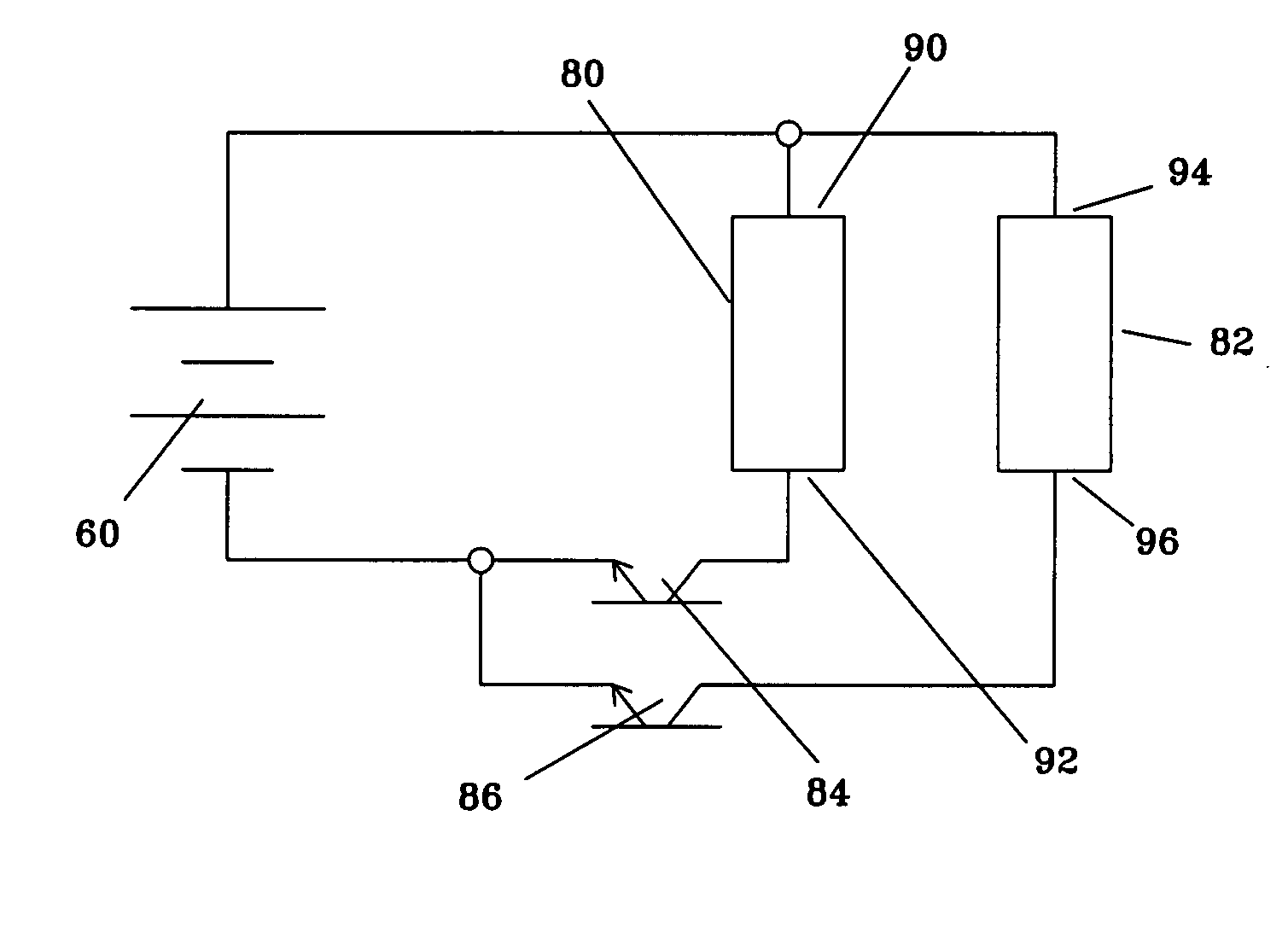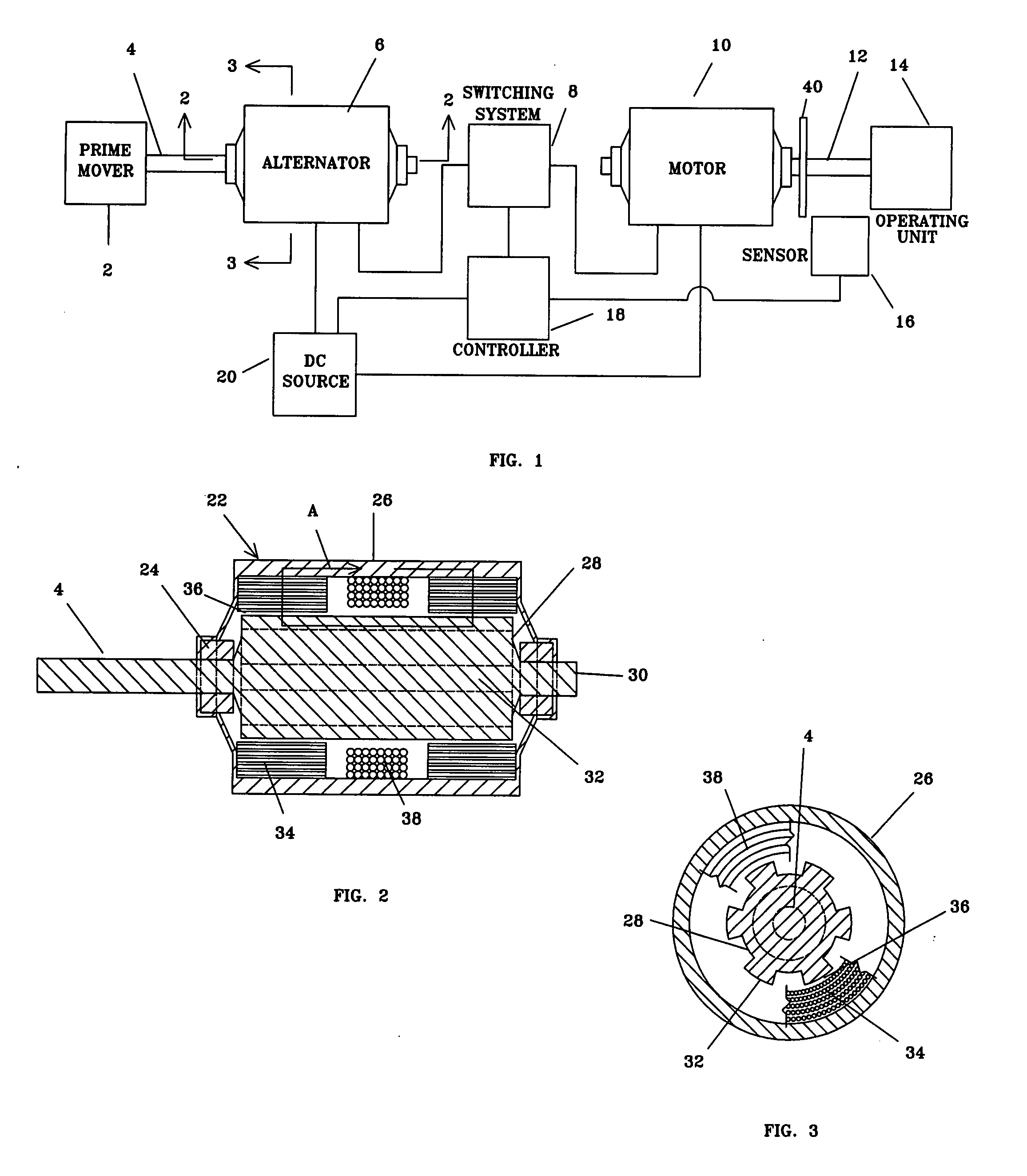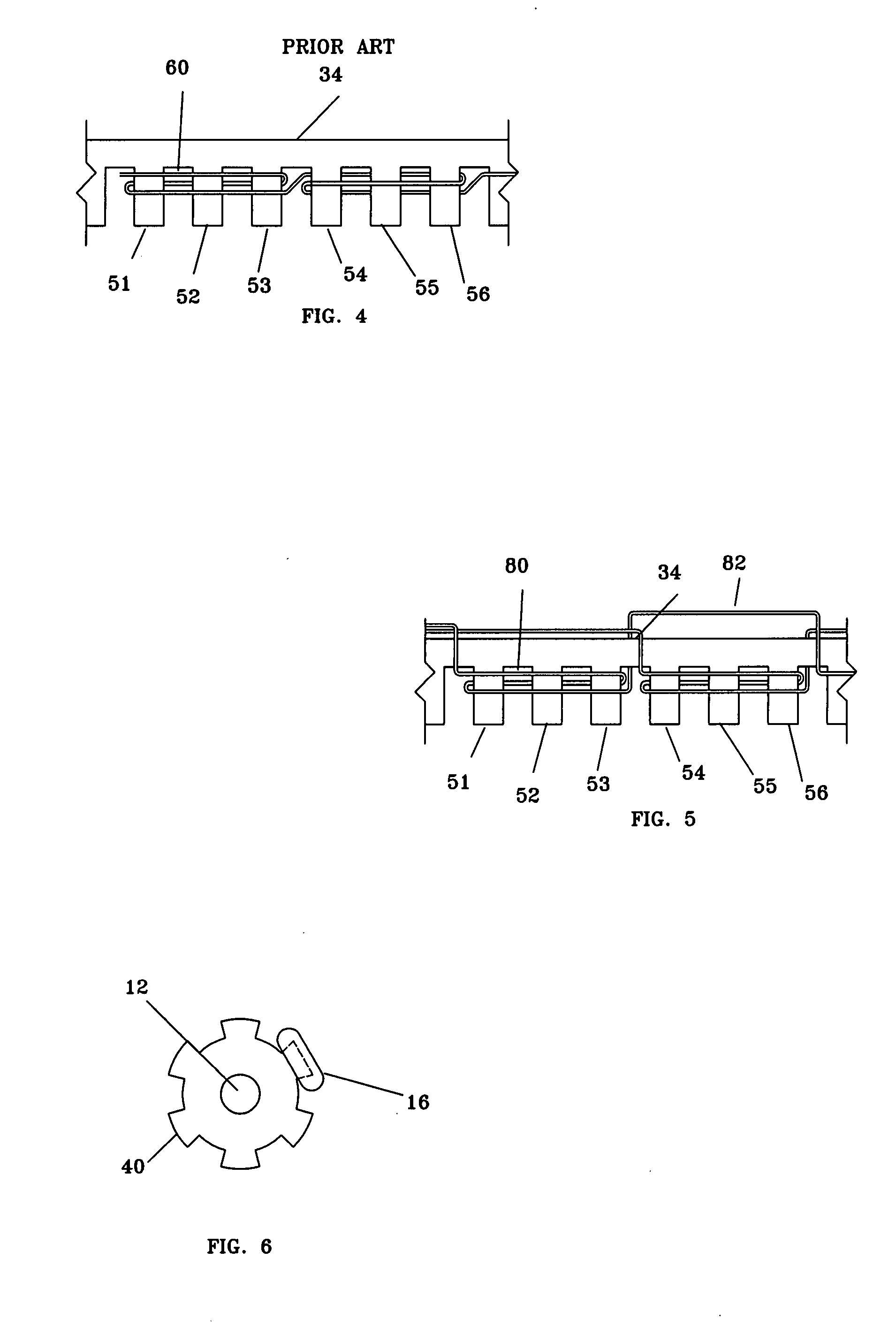Simplified solid state electric motor drive technique
- Summary
- Abstract
- Description
- Claims
- Application Information
AI Technical Summary
Benefits of technology
Problems solved by technology
Method used
Image
Examples
Example
[0036] Referring to the drawings, FIGS. 1, 2, 3, and 6 there is shown a variable reluctance electric power system. FIG. 4 shows a partial view of a conventionally wound stator. FIG. 5 shows a partial view of a stator wound using the stator winding technique which embodies the instant invention. FIG. 7 shows the diagram of a typical DPDT switching system which might be used with one phase of a conventionally wound stator. FIG. 8 shows a diagram of a switching system which might be used with one phase of a stator wound using the stator winding technique of the instant invention.
[0037] Now referring to FIG. 1, a schematic drawing of a variable reluctance electric power system. A prime mover 2 could be any of a number of conventional power sources. For purposes of this discussion, the prime mover 2 will be assumed to be a turbine operating at any speed up to, or perhaps even beyond, 100,000 rpm. Said prime mover 2 is connected by an alternator drive shaft 4 to an alternator 6 of the in...
PUM
 Login to View More
Login to View More Abstract
Description
Claims
Application Information
 Login to View More
Login to View More - R&D
- Intellectual Property
- Life Sciences
- Materials
- Tech Scout
- Unparalleled Data Quality
- Higher Quality Content
- 60% Fewer Hallucinations
Browse by: Latest US Patents, China's latest patents, Technical Efficacy Thesaurus, Application Domain, Technology Topic, Popular Technical Reports.
© 2025 PatSnap. All rights reserved.Legal|Privacy policy|Modern Slavery Act Transparency Statement|Sitemap|About US| Contact US: help@patsnap.com



